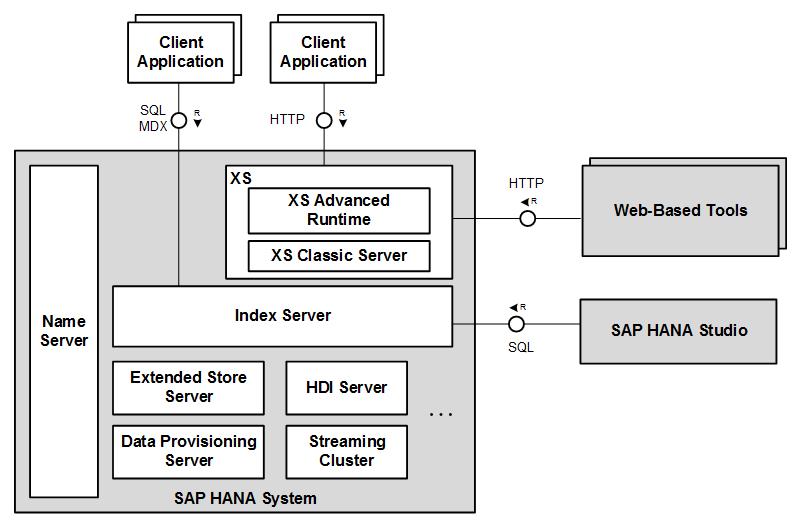Introduction to SAP HANA
SAP High-Performance Analytic Appliance (HANA) is a high-performance real-time data computing platform launched by SAP in June 2011. The platform leverages the memory computing technology, which enables users to directly query and analyze a large quantity of real-time business data.
SAP HANA has the following features:
- Rapid data processing
SAP HANA data is stored in the in-memory database (IMDB), which features rapid data input/output (I/O). Success stories show that the data processing rate provided by SAP HANA is 1,000 or even 10,000 times faster than that provided by customers' original database systems.
- Support for online analytical processing (OLAP) and online transaction processing (OLTP)
OLAP is a main application in data warehouse (DWH) systems. It supports complex analysis, focuses on decision support, and provides query results that are easy to understand.
OLTP is a main application of traditional relational databases. It processes basic and routine transactions, such as banking transactions.
- Support for both structured and unstructured data
Structured data is a type of information represented using a unified structure, such as digits and symbols. The other data that cannot be represented using a unified structure is called unstructured data, such as texts, images, audio, and HTML.
- Various peripheral application software
The application software includes data replication (DR) and business intelligence (BI).
- Structured query language (SQL), multidimensional expressions (MDX), and BI consumer services (BICS) interfaces for the application layer
- Support for multiple data importing modes
Figure 1 shows the SAP HANA architecture.
Application Scenarios
SAP HANA applies to following scenarios:
- Accelerator for other databases
- Data source for report analysis
- OLAP DWH
- OLTP database
- Unified SAP database platform
Feedback
Was this page helpful?
Provide feedbackThank you very much for your feedback. We will continue working to improve the documentation.See the reply and handling status in My Cloud VOC.
For any further questions, feel free to contact us through the chatbot.
Chatbot






